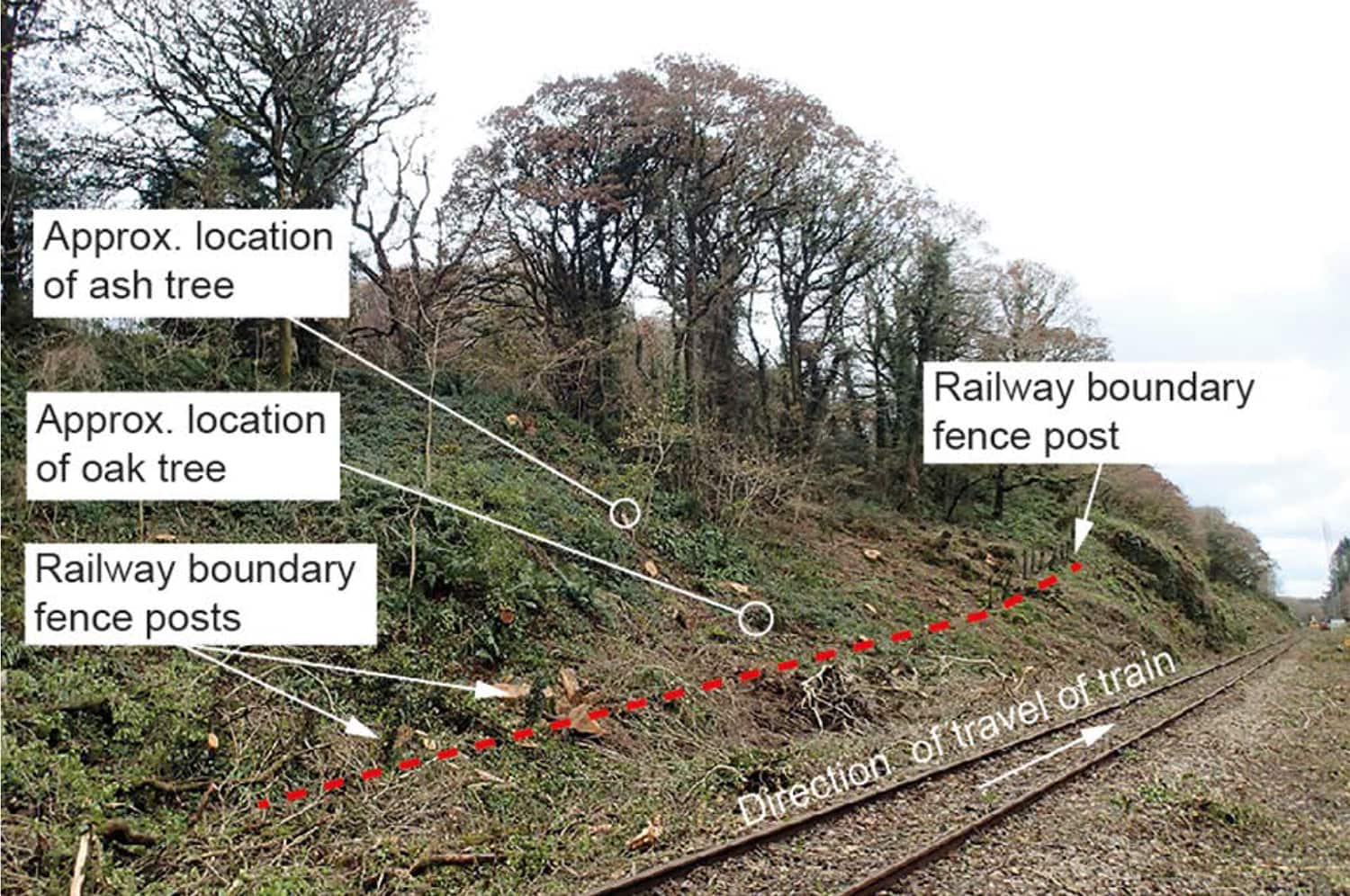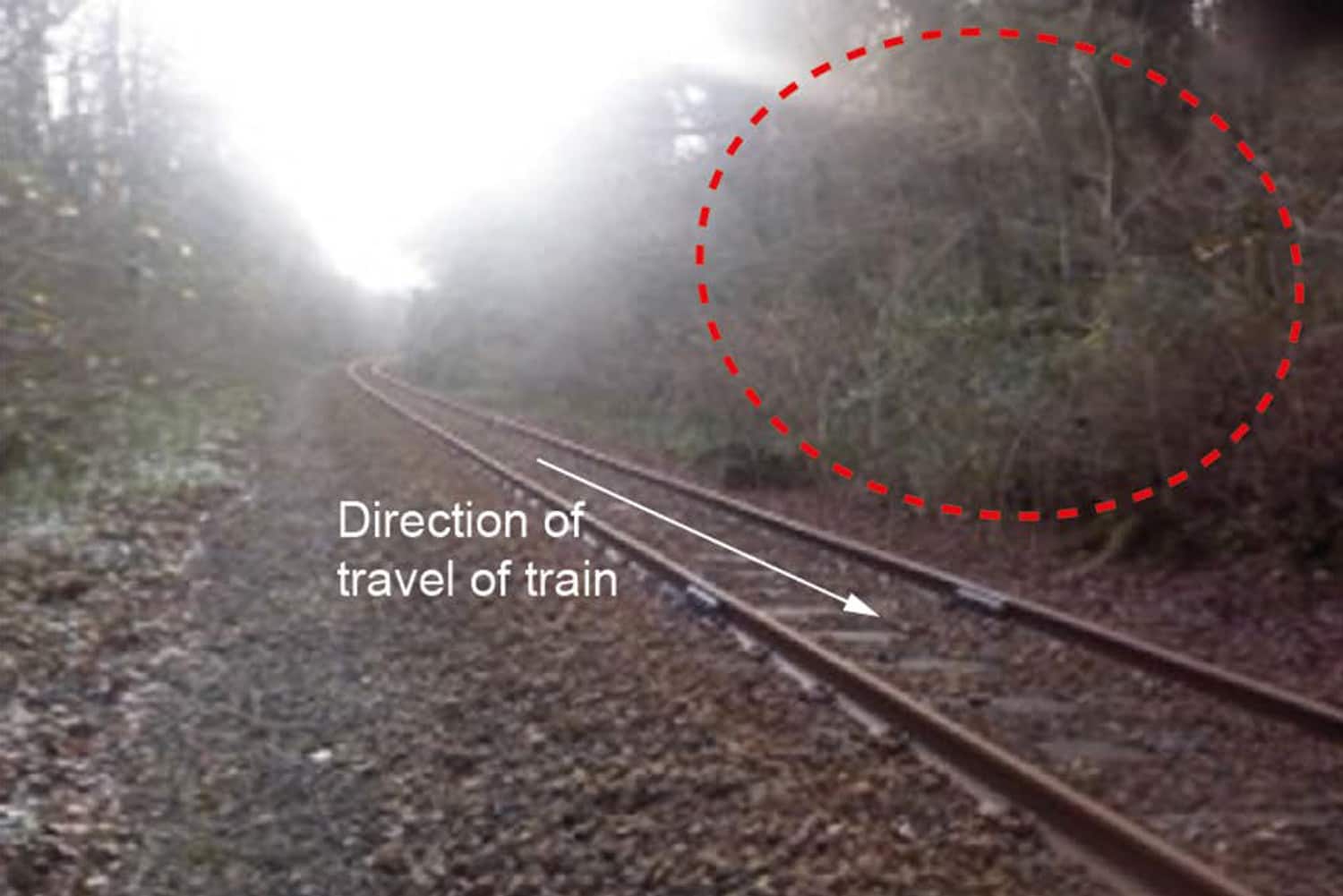
Location of the oak and ash trees (dashed red line shows railway boundary)
Network Rail, the owner of the railway infrastructure at this location, has procedures requiring inspection of trees within falling distance of its railway tracks. The procedures are intended to identify ‘hazardous trees’. A hazardous tree is defined by Network Rail as ‘a tree, which may have significant defects, that poses a risk to either the railway or a third party’.
Network Rail’s procedures require tree inspections on foot every 36 to 44 months, and from train cabs every 12 to 16 months. The last inspection on foot at the accident site was on 28 June 2017 and the last inspection from a train cab was on 16 October 2019. No hazardous trees were identified during these inspections on Network Rail land or on land beyond the railway boundary. No tree-related inspections were outstanding at the time of the accident.
Although Network Rail procedures required tree inspections to include trees outside the railway boundary, the diseased part of the ash tree was near the ground and was probably not visible from within the railway boundary due to the presence of other vegetation. Access to the bottom of the ash tree would have been difficult due to underfoot conditions and other vegetation. In addition, Network Rail staff are not expected to walk outside the railway boundary when carrying out inspections as they do not have a legal right to enter neighbouring land for this purpose.

Pre-accident image with dashed line showing area from which trees fell (image courtesy of Network Rail)
Network Rail has processes for assessing risk once a hazardous tree has been identified. These consider the number of and types of tree defect, the maximum permitted train speed, the likely size of the part of the tree that could be struck by a train, and the potential consequences, such as train derailment. The actions required as a result of these risk assessments vary from additional inspections, to closing the railway until the hazard has been dealt with. The processes involve contacting neighbouring landowners where necessary. None of these processes were applied at the accident site because no hazardous trees had been identified by Network Rail during its inspections.
Landowners have a common law duty to prevent reasonably foreseeable harm to their neighbour’s property; in this case, the railway. It has not been possible to establish if any person or organisation was aware of the condition of the ash tree before the accident, partly because enquiries by Network Rail have not identified the landowner. The two immediately adjoining landowners have been identified and both state that their boundaries do not include the area of land from which the trees fell.